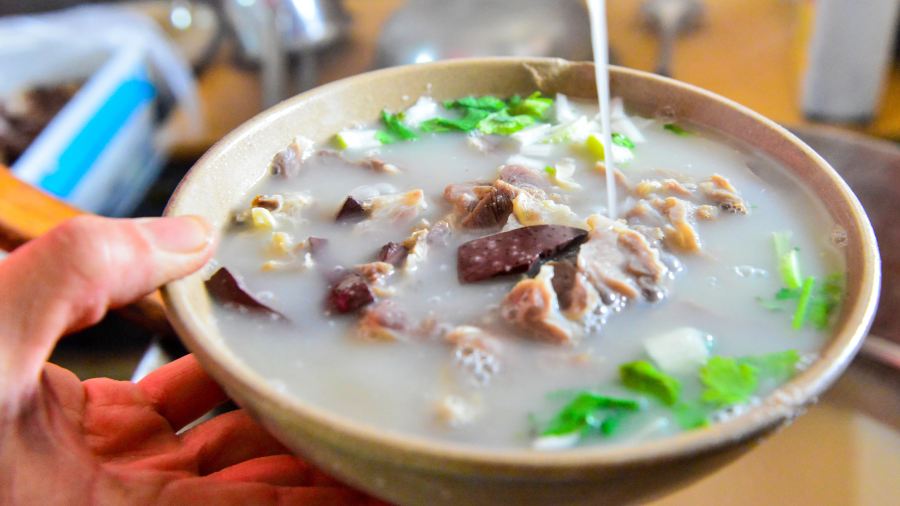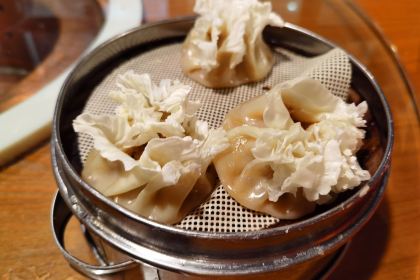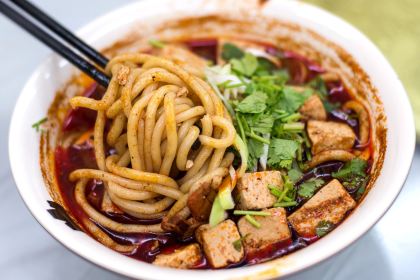Qing He Yuan
4.5/5
105 Reviews
No. 15 of Must-Visit Restaurants in Taiyuan
Highlights: A Tounao shop that locals make a special trip for, with a refreshing aroma of distiller's grains.







More
Currently closed|Open at 06:30 todayShow more
+863516635777
南肖墙宝地小区
 artistfx1118Tou Nao Taiyuan's Tou Nao is a major feature of Taiyuan's cuisine. The taste is not acceptable to everyone. It may be like Beijing's Douzhi. People who like it like it very much, but people who don't like it can't accept it. Tou Nao was invented by Fu Shan, a famous scholar and medical scientist in the late Ming and early Qing dynasties. It is a medicinal food that nourishes the human body. It is made of medicinal materials, steamed noodles, lotus root, mutton, long yam, rice wine, distiller's grains, and sheep tail oil. Eat with leeks Shaomai Mutton Shaomai, very fragrant Beef wontons taste good, halal food
[Mint] Environment:
Good
[Service bell] Service:
OK
artistfx1118Tou Nao Taiyuan's Tou Nao is a major feature of Taiyuan's cuisine. The taste is not acceptable to everyone. It may be like Beijing's Douzhi. People who like it like it very much, but people who don't like it can't accept it. Tou Nao was invented by Fu Shan, a famous scholar and medical scientist in the late Ming and early Qing dynasties. It is a medicinal food that nourishes the human body. It is made of medicinal materials, steamed noodles, lotus root, mutton, long yam, rice wine, distiller's grains, and sheep tail oil. Eat with leeks Shaomai Mutton Shaomai, very fragrant Beef wontons taste good, halal food
[Mint] Environment:
Good
[Service bell] Service:
OKReviews of Qing He Yuan
Some reviews may have been translated by Google Translate
4.5/5Outstanding
All (105)
Latest
Photo reviews (46)
Positive reviews (28)
Negative reviews (2)
Tou Nao Taiyuan's Tou Nao is a major feature of Taiyuan's cuisine. The taste is not acceptable to everyone. It may be like Beijing's Douzhi. People who like it like it very much, but people who don't like it can't accept it. Tou Nao was invented by Fu Shan, a famous scholar and medical scientist in the late Ming and early Qing dynasties. It is a medicinal food that nourishes the human body. It is made of medicinal materials, steamed noodles, lotus root, mutton, long yam, rice wine, distiller's grains, and sheep tail oil. Eat with leeks Shaomai Mutton Shaomai, very fragrant Beef wontons taste good, halal food [Mint] Environment: Good [Service bell] Service: OK
I had seen Tao Yue She eat the Tou Nao here before, so we also came here to check in on the morning of the last day of our trip to Taiyuan. Location: No. 21-26, Block A, Tongluowan, Nanxiaoqiang, Yingze District, Taiyuan City Transportation: Take the bus to Liubei Station, then walk there. Qingheyuan opens at 6:30 in the morning. It is said that the queue starts at 7 o'clock, so we arrived before 7 o'clock. The area is very large, but there are not many empty tables at that time. Because we are worried that we may not be able to accept the taste and will go back to the hotel for breakfast later, we only ordered a single serving of Tou Nao and a Maohe. After paying the money, take the bill to the side to line up, and then take it to the seat by yourself. The Tou Nao is paired with a little chives. There are instructions for eating on the wall. Pour the vinegar into the chives, mix well, and then put the chives into the Tou Nao and stir well. My friend can't eat mutton. When eating Tou Nao alone, because there is rice wine and fermented glutinous rice pressed on the mutton, the taste is very light and can be eaten. After adding vinegar, the mutton flavor will become stronger. I drank it directly, and it tasted too bitter. It was really too bitter and hard to drink. After adding vinegar and chives, the bitterness was masked a little, and it felt a little better. Overall, I feel that although brain is very nutritious and nourishing, it is really not for everyone [awkward]
I didn't get to eat Tou Nao at Qing He Yuan. Who can I complain to? I didn't find the dish "Tou Nao" on the menu at first. Later, I asked the waiter and he said that only breakfast is available for single servings of Tou Nao. If you want to eat Tou Nao at dinner time, you can only order a large pot of Tou Nao. It's not something that one or two people can finish. If you are new to Taiyuan, don't try Tou Nao at night without knowing anything about it. Mutton siu mai with Tou Nao should be considered the standard here. Although you missed Tou Nao, you still have to have siu mai. But be careful, the siu mai here is completely different from the siu mai in the south. It doesn't contain rice, which means... it's full of meat. In order to make up for the To make up for the lack of "brains", I can only have a bowl of mutton soup, which is a temporary combination with mutton dumplings. For people who like mutton, this mutton combination is also very satisfying. In addition, it is said that the fried meat here is also made of mutton. When eating, you don’t feel it at all, there is no mutton smell at all, and it is very tender and smooth. Compared with the dumplings and mutton soup that are rich in "mutton flavor", it is a completely different style. By the way, this is also a halal restaurant, so if you want a taste other than mutton, you have to have braised beef with sauce. It is quite chewy with a little sauce. Even if you take it away as a midnight snack, it is also very good.
Qingheyuan, founded during the reign of Emperor Chongzhen of the Ming Dynasty, has a history of nearly 400 years. This is a favorite breakfast place for old Shanxi people. Locals are used to ordering a bowl of head and a basket of siomai here. There is also a saying in Taiyuan: Come to Qingheyuan to eat head. "Head" Head has nothing to do with pig brain and tendon. It is a "eight treasures soup" that is slowly stewed with stewed noodles, long yam, mutton, rice wine, astragalus, etc. It is a particularly nourishing food. Head must be eaten with a dish of "pickled leeks". However, even if you know it is nourishing, you are not used to it. Looking at the people drinking happily at the tables on both sides, I silently put down the spoon. "Siomai" Siomai, also known as Shaomei, is well made by almost every family in Shanxi, probably inseparable from the good quality of mutton. "Sheep offal" Drinking a bowl of mutton offal soup in this slightly cool weather is really warm. Once again, lamb is good.
We tried this restaurant, which seems to be an authentic, long-established one, located near Liuyuan Commercial Street. The mutton dumplings were so hearty that we got a little tired of them. But they were definitely worth the price. The shumai was also good. The "braised tofu" was only available in the morning, so it was a bit of a shame we didn't get to try it.